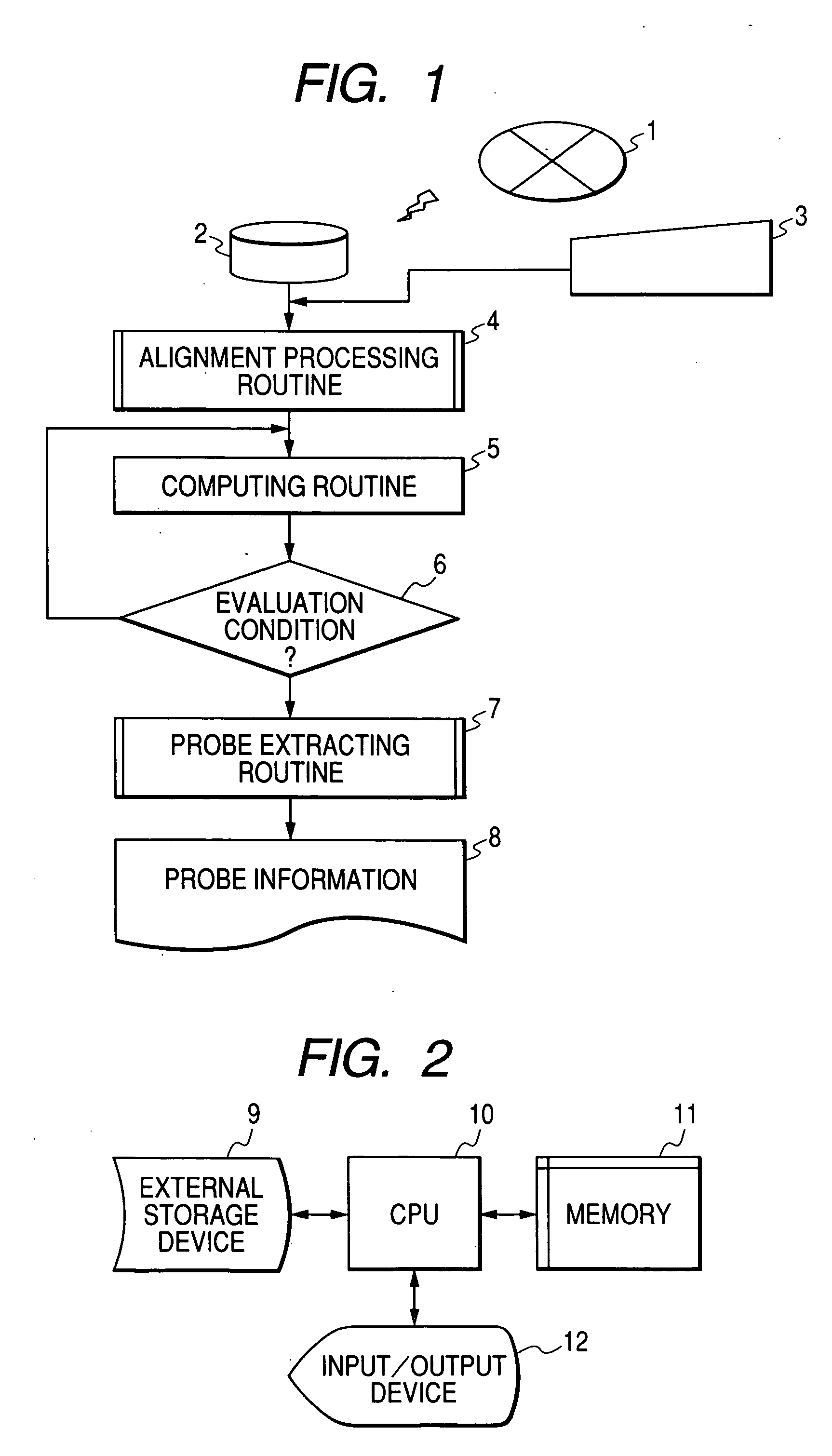Method of acquiring a set of specific elements for discriminating sequence
a technology of sequences and specific elements, applied in the field of information processing methods, can solve the problems of inability to identify the sequences with only mutations, dull and complicated operation of such tools, and achieve the effect of accurately and efficiently acquiring candidates
- Summary
- Abstract
- Description
- Claims
- Application Information
AI Technical Summary
Benefits of technology
Problems solved by technology
Method used
Image
Examples
example
[0115] A system for specifically carrying out the above-mentioned method will be described in more detail. The flow shown in FIG. 1 represents an embodiment of the present invention. A database of gene information sequence is present on a network drive 2 through an internet 1 (or is originally present).
[0116] Selection of multiple sequences is performed by an operator who operates a keyboard 3.
[0117] The selected multiple sequences are subjected to alignment on an alignment processing routine 4. After the alignment, a range (common region after the alignment) for searching a set of mutation elements for identification is defined on the basis of information inputted through the keyboard 3 by the operator, and is subjected to a computation by a computing routine 5. At this time, evaluation is performed on the basis of an evaluation condition 6 of computation (which may be similarly given from the operator or may be programmed in advance), and the computation is trial until a predete...
PUM
| Property | Measurement | Unit |
|---|---|---|
| Tm | aaaaa | aaaaa |
| alignment processing | aaaaa | aaaaa |
| time period | aaaaa | aaaaa |
Abstract
Description
Claims
Application Information
 Login to View More
Login to View More - R&D
- Intellectual Property
- Life Sciences
- Materials
- Tech Scout
- Unparalleled Data Quality
- Higher Quality Content
- 60% Fewer Hallucinations
Browse by: Latest US Patents, China's latest patents, Technical Efficacy Thesaurus, Application Domain, Technology Topic, Popular Technical Reports.
© 2025 PatSnap. All rights reserved.Legal|Privacy policy|Modern Slavery Act Transparency Statement|Sitemap|About US| Contact US: help@patsnap.com



